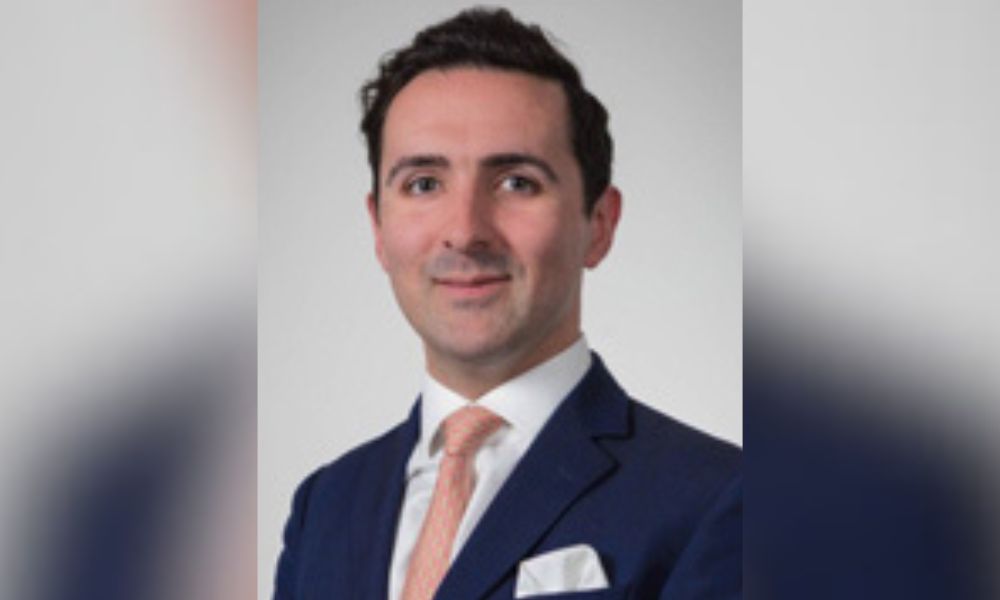Is the offshore wind industry growing too rapidly to keep up with the risks?

Is the offshore wind industry growing too rapidly to keep up with the risks? | Insurance Business Canada
Insurance News
Is the offshore wind industry growing too rapidly to keep up with the risks?
The speed of build-out is opening more exposures
Insurance News
By
Gia Snape
The offshore wind industry is on the cusp of unprecedented growth amid increased investments, technological innovations, and expanding capacity.
While this spells good news for the global energy transition, growth factors also bring significant risks, which must be managed if the industry is to scale sustainably.
In fact, the speed of the build-out is creating more exposures for developers, an expert told Insurance Business.
“We’re at a point where there’s going to be significant growth over the next 10-15 years, which is going to put the offshore wind energy production on a different level,” said Adam Reed (pictured), global leader for offshore renewables and upstream energy at Allianz Commercial.
“Each of those different growth areas, whether it’s geography or technology, comes with their own associated challenges. It’s important that everybody gets behind the move towards renewables growth and focuses on supporting that transition and bringing it to reality.”
Bigger turbines, bigger exposures
One significant trend in the offshore wind industry that’s driving more risks is the growing size of wind turbines.
In the last 20 years they have almost quadrupled in height, from around 70m/230ft to around 260m/853ft, or nearly three times taller than the Statue of Liberty, according to Allianz Commercial.
Reed explained that the larger the blades, and the larger the sweep, the more power a turbine will generate in a single turn.
“The aim is to generate as much power as safely as possible from the licenced block that you have,” he said. “The logic is that the larger the turbine, the fewer you need to install, which also has knock-on effects, from fewer cables to fewer individual elements that can go wrong, and you can be saving on infrastructure spend.”
Notably, turbine failure is the second major cause of claims for offshore wind firms, accounting for 20% of claims according to Allianz Commercial. Cable damage or failure is the top cause of claims, making up more than half (53%) of losses.
But Reed also flagged another challenge brought by bigger turbines: a shortage of vessels to deliver and install them.
“The taller the tower, the bigger the blade, the bigger the vessel you need to install those. Globally, we need about US$20 billion [AU$31.2 billion] of investment in 200 new vessels to reach our 2023 goals,” Reed told Insurance Business.
“The continued growth of wind turbine sizes needs to be supported by not just the factories, but also the vessels. There’s potential for us to lag if we’re not building enough specialist vessels to install the larger turbines.”
Risks in floating offshore wind infrastructure
From multi-purpose windfarms and floating installations to next-generation connectivity and drone-based maintenance, the technological innovations in the offshore wind industry are staggering.
For Reed, the deployment of floating wind turbines is one of the most exciting – and risky – developments in the space.
In the past, water depths have limited the extent of offshore wind development, he said. But the advancements in floating offshore wind (FOW) technologies is quickly changing the game.
‘Floating’ offshore wind turbines are anchored to the seabed, which allows power to be generated over deeper water with higher and more consistent wind speeds.
This technology is being deployed across the North Sea to the Pacific, the Atlantic, and the Mediterranean. But countries such as South Korea, Japan, Australia, and the US are also exploring potential investments.
“With this development, we’re going to have a chance of meeting our targets for utilizing offshore wind. But there is also clearly a lack of maturity in design, particularly on the key things like the foundation design and cables,” Reed said.
A verified and consistent design for FOW is critical for establishing a safety record, but it’s still unclear how current designs will impact harsh and dynamic environments in the long-term, he explained.
‘Turning point’ for offshore wind industry
Allianz Commercial highlighted the risk trends, loss patterns, and growth opportunities for offshore wind in a new report, hailing the incredible potential for offshore wind as a viable source of clean power worldwide.
But it also warned that developers and their insurers must juggle several external risks, including inflation, rising interest rates, geopolitical tensions, and catastrophic weather events, as they scale their enterprises.
Reed, however, is optimistic that growth ambitions can be supported by cooperation among stakeholders, including the insurance industry.
“Certainly, the growth targets are challenging, and for every opportunity we have, we do also have a significant challenge, whether that’s with the floating technology, wind turbines, and other infrastructure like ports and factories,” he said.
“Sharing of information is vitally important, as well as engaging with the market, and with brokers and insurers, as early as possible. We try and take a collaborative approach when it comes to working through these challenges with our partners.
“I think it’s really about everybody coming together – insurers, developers, regulators and government – and being focused on addressing these challenges so that we can make sure that we deliver on offshore wind’s potential to transform the world’s power supply.”
Are you a broker serving the offshore wind industry? Tell us about the challenges your clients are seeing below.
Keep up with the latest news and events
Join our mailing list, it’s free!






